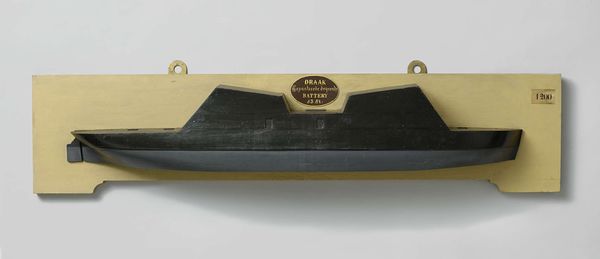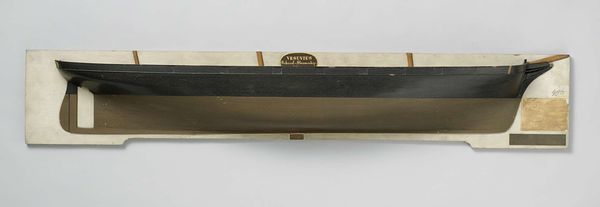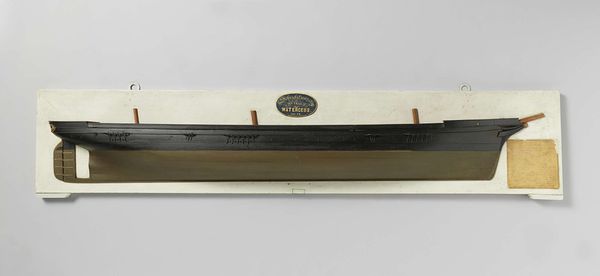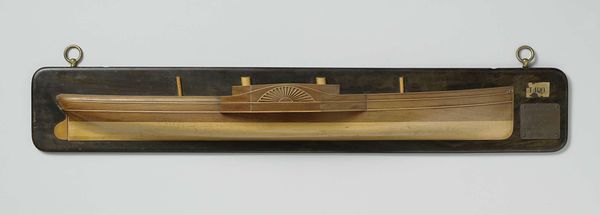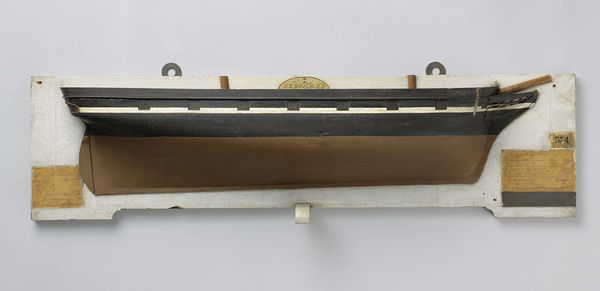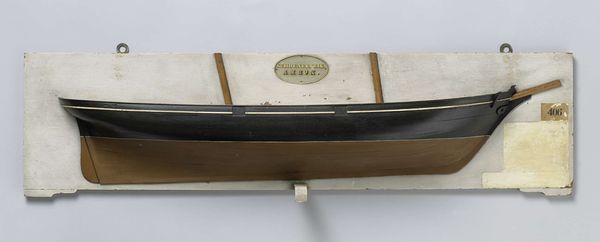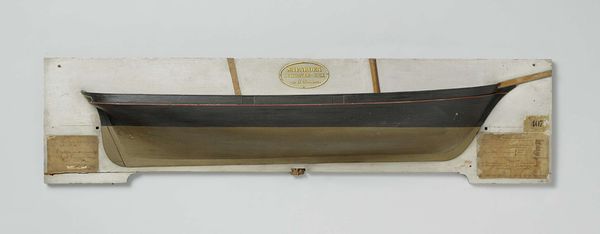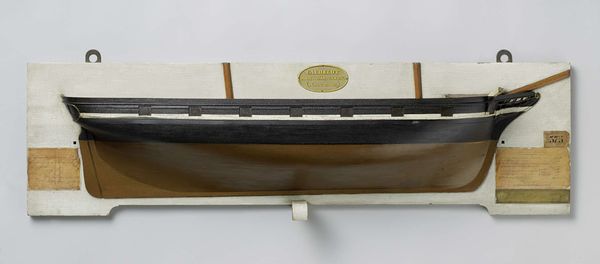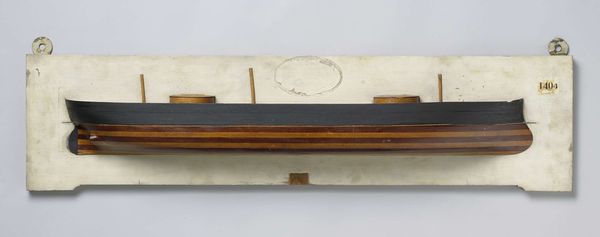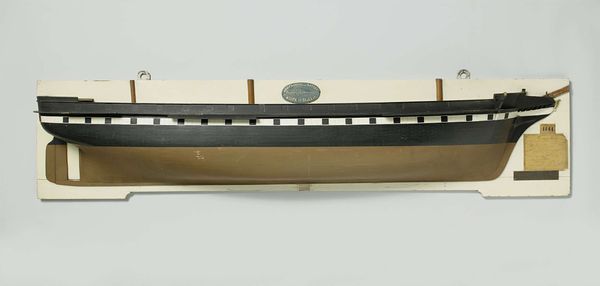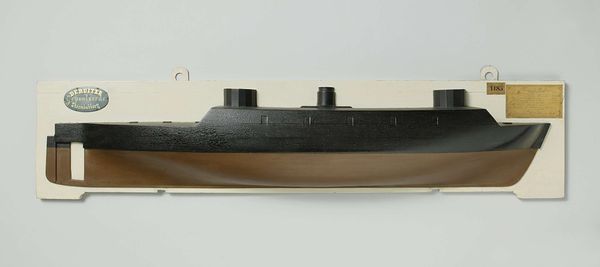
#
3d sculpting
#
3d printed part
#
sculpture
#
3d printing
#
virtual 3d design
#
sculptural image
#
unrealistic statue
#
3d shape
#
prop product design
#
framed image
Dimensions: height 29.3 cm, width 137.5 cm, depth 17.5 cm
Copyright: Rijks Museum: Open Domain
Curator: We're looking at a "Half Model of a Floating Battery," crafted in 1867 by Rijkswerf Vlissingen. The term 'half model' refers to the practice of creating just one half of the vessel, presuming symmetry about the center line, as can be seen. Editor: There’s a starkness to it. It feels quite austere, doesn’t it? Minimal detailing; an almost brutal reduction of form down to its essence, affixed onto what appears to be a painted wooden board. I wonder about the materiality and how that communicates power or intention. Curator: Indeed, that austerity serves a particular function. The emphasis is on clear lines and volume. These were tools for naval architects and shipwrights. Note the sharp, efficient geometry—the acute angles of the battery protecting its lower half from incoming fire, juxtaposed with the curved lines which define its naval capabilities. Editor: Absolutely. It begs the question, what was the labor involved in constructing this model and the ship it represents? Think about the procurement of materials, the social relations inherent in a massive undertaking like shipbuilding for colonial and trade efforts. I imagine countless hours from skilled and perhaps unskilled labor, organized in such a way that it often goes unseen and underappreciated. Curator: But we cannot discount the formal choices within that context. The symmetry speaks to the ideal, a pursuit of perfect equilibrium on water and, by extension, dominance at sea. The smooth surfaces almost completely remove texture which speaks of efficiency and an ability to reduce any potential friction. The object stands alone. Editor: Though, let's remember, a solitary object is rarely ever solitary in its making or its implications. Even here, we might reflect on the absence, say, of an aesthetic appreciation of wood, that has seemingly been obscured by a coating to almost render its presence unseen. The intent seems to have it fade into the background rather than celebrating the material it is resting upon, no? Curator: A keen observation. Perhaps an acknowledgement that the backdrop itself—support for the battery, should in essence ‘support’ it. In the same way it sits supporting it in real life. In this rendering of the potential design is the suggestion of an inherent ability to execute a very clear practical functionality above and beyond aesthetic delight. Editor: Which raises profound questions, doesn’t it? What are the social implications when industrial and state processes attempt to ignore and devalue materiality itself? Curator: A question worthy of extended reflection. I believe a thorough visual analysis will reveal that a more thoughtful application of materials reveals an elevated attention to function and, ironically, longevity. Editor: Indeed, something easily overlooked in favour of perceived gains.
Comments
No comments
Be the first to comment and join the conversation on the ultimate creative platform.
